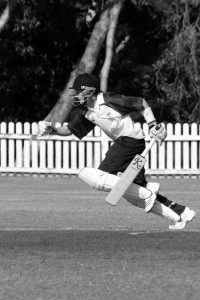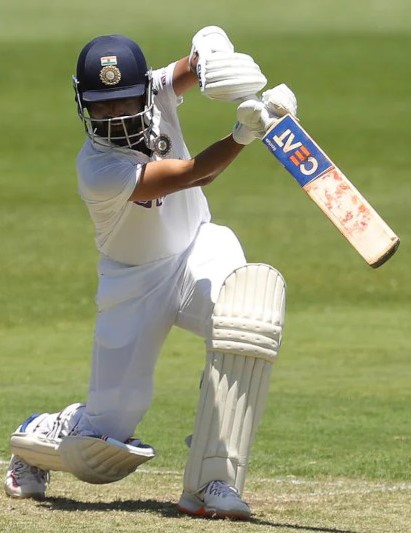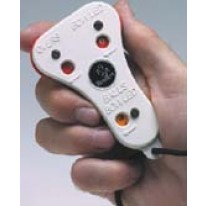Use Soft Hands When Defending

Relax your grip on the bat when playing defensive shots, especially to slow bowling. This allows the hand to absorb energy from the impact of the ball on the bat and will lessen the rebound distance of the ball off the bat, lowering your chance of being caught by a close-in fielder or the bowler.
Be an intelligent batter
An intelligent batter will take the game to the fielding team by scoring confidently and freely against all but the most demanding deliveries from the bowlers but will give few chances for them to dismiss him.
For example, one of his favourite shots is the lofted straight drive which he plays successfully for three boundaries. Not surprisingly, the fielding team captain puts a fielder back on the long-on boundary. The intelligent batter takes account of this and changes his strategy and starts safely picking up singles off virtually every ball by clipping the ball along the ground to the long-on fielder. The intelligent batter keeps the scoreboard ticking over, reduces risk to a minimum, frustrates the bowler and fielding captain, and possibly produces a match-winning inning.
Time to play your shots
Sports scientists have determined that it takes 0.2 seconds to sight, predict the flight of the ball, make a decision on what stroke to play and another 0.3 seconds to play the stroke. This means that for every batter it takes at least 0.5 seconds for the decision and response aspect of playing a stroke. What remains of the time taken for the ball to travel from the bowler’s hand to the batter is available for the perception of the ball and the prediction of the flight. A ball travelling at 100 km/h (a typical speed for a 12-14-year-old pace bowler) takes about 0.75 seconds to reach the batter. This means that the batter must sight and predict the path of the ball in the first quarter of its flight. At that moment a decision must be taken and the stroke started. An experienced batter can do this, the less experienced cannot. He needs to see the ball for a much longer period of time to make an accurate prediction and decision.
One way you can help yourself become more skilled at this process is to pick your bat up early, thereby cutting down the movement time in playing the stroke. Another is to combine the pickup of the bat with a first foot moving back and across toward the off stump. This will give you a few extra milliseconds to sight the ball. You can still play a successful front-foot shot from this position if the delivery demands it.
As an aside, it is interesting to note that a bowler delivering the ball at 130 km/h gives the batter 0.5 seconds before the ball has arrived at him. This gives the batter 0.0 seconds to see and predict the flight of the ball before deciding what shot to play. Makes you wonder how batsmen cope with facing 150-160 km/h deliveries?
Timing the ball
The ball will rebound more forcefully off the bat if struck with the heaviest part of the bat, which is found in the lower half of the bat’s face. Although we call this sweet spot the middle, it is actually lower down the bat face than the geometric middle.
Taking guard in front of the crease
If you are finding it difficult to score off a pace bowler, with the wicket-keeper standing back, don’t be afraid to take guard up to a metre in front of the batting crease. This will serve to disrupt the bowler’s rhythm and he will need to adjust his length to avoid bowling full-tosses or half volleys. It will also serve to make it harder for an umpire to give you out LBW as the umpire will have more doubt in his mind as to whether the ball will have continued on to hit the stumps.
Know your limits
Learn your limitations and develop your batting approach accordingly. Every young player will have some weak shots and will need to be wary of playing them and may need to eliminate some entirely. However, your ultimate aim will be to develop these weak shots through practice and correction so that you will be confident to use them in the future. You should aim to work on these weak shots indoors in the winter and in the nets during pre-season practice. You then must decide whether you are confident enough to use them in matches. Your aim should always be to score at the fastest possible rate with the least possible risk.






